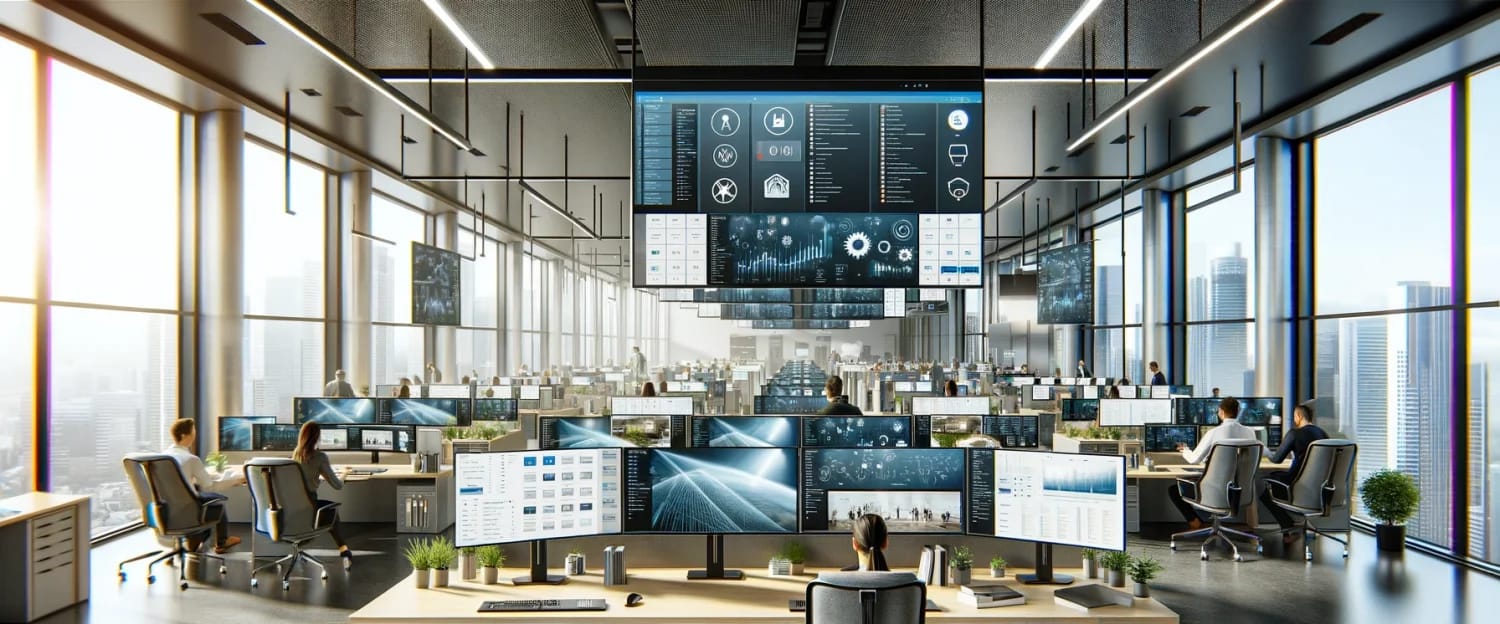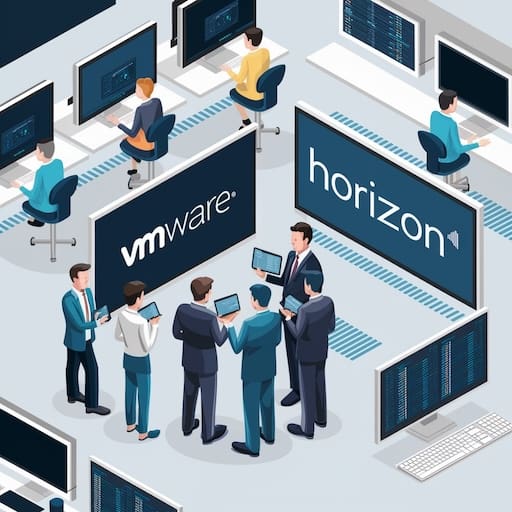Introduction
In a series of articles, I will describe how Horizon is being implemented in a fictional financial organization called Monetrax. This is a new company that will engage in financial and investment advice through mobile agents and mini-points in various locations such as shopping malls, offices and special events. The company will employ about 500 people at the start. In a time horizon of 2-3 years, the staff is expected to expand to 1,500-2,000 people.

Monetrax already has basic services in place, such as AD with synchronization to Entra ID, DNS, DHCP, KMS, as well as vSphere version 8. VDI machines and RDSH servers under Horizon will use vSAN storage.
Part 1 – Preparing the organization for the deployment
Understanding the business and technology needs of Monetrax
Monetrax, debuting as a financial advisory firm, is starting its business with a foundation based on modern technology, opening the door to a world of digital innovation. Given its dynamic environment, which includes mobile agents and service points spread across locations such as shopping malls and special events, it is important to understand how VMware Horizon can support these specific needs. Deploying a VDI (Virtual Desktop Infrastructure) solution will not only increase employee mobility and flexibility, but also contribute to data security and operational efficiency.
Monetrax already has a solid IT infrastructure in place, including AD with a connection to Entra ID, DNS, DHCP, KMS and vSphere, which provides a strong foundation for Horizon’s deployment. The key, then, is to integrate Horizon with existing systems and maximize the benefits of vSAN storage, providing a powerful and scalable solution for VDI machines and RDSH servers.
Monetrax organizational structure

VMware Horizon architecture planning
A key element is to develop a VMware Horizon architecture that meets Monetrax’s requirements. The first step is to design a VDI environment that must be scalable, efficient and secure. It is also important to pay attention to the selection and configuration of Horizon components, such as Connection Servers and Unified Access Gateways, to ensure a reliable and seamless connection for end users.
Below is a table of key questions that will help you gain a thorough understanding of your requirements. The information gathered is essential for designing the optimal solution architecture and effectively planning for future growth opportunities.
| Question | Answer |
| What are the main business objectives to support a VMware Horizon deployment? | Increasing employee mobility and flexibility, ensuring data security, improving business application management. |
| How many end users will use the VDI system? | About 500 users in the first year, with plans to grow to 2,000 in the next two or three years. |
| What business applications must be available on virtual desktops? | Standard office applications, specialized financial advisory software, in-house CRM and ERP systems accessible through a browser. |
| What peripherals can be used in the environment? | The company plans to use network printers, as well as smart card readers built into laptops and on USB. Barcode readers may also be used. |
| What are the system availability and performance requirements? | High availability, minimal downtime, high performance for analytical applications. |
| Are there special compliance or security requirements? | Compliance with GDPR and local data protection regulations, strong data encryption. |
| What are the current infrastructure capabilities (e.g., servers, storage, network)? | Having servers with vSphere 8 and vSAN storage, good internet connection and internal network. |
| What are the company’s plans to scale in the future? | Doubling the number of users and expanding into new markets in 2-3 years. |
| Are there budget constraints for the implementation project? | Separate budget, but looking for cost-effective solutions. |
| What is the preference for data localization (on-premise, cloud, hybrid)? | Preference for hybrid solution with on-premise storage of sensitive data. |
| Are there specific requirements for integration with existing IT systems? | Integration with AD, Entra ID, DNS, DHCP, KMS, and flexibility to integrate with new technologies. |
| What are the plans for depreciation and renewal of IT equipment? | We plan to amortize existing IT equipment over the next 5 years with the flexibility to renew and upgrade according to needs and changing technology requirements. |
Risk analysis and migration strategy
Every technology implementation carries risks. For Monetrax, it’s important to identify potential challenges, such as data compliance, security and ensuring service continuity. Developing a migration strategy that addresses these risks is critical to success. This plan should include migration steps, ensuring minimal disruption to the business and a smooth transition to the new environment.
Preparing the IT team and end users
The success of the implementation also depends on the IT team and end users. Therefore, it is important to provide training and certification for the IT team so they can effectively manage the new environment. At the same time, communication with and training of end users is essential to ensure a high level of adoption of the new solution and overall user satisfaction.
Summary
This section of the article has outlined the key steps Monetrax should take in preparation for implementing VMware Horizon. Needs analysis, careful architecture planning, conscious risk management and effective staff preparation are the foundations for success. In the next section, we will focus on the technical details of the implementation, providing a complete picture of how Monetrax can successfully deploy VMware Horizon in its operating environment.

